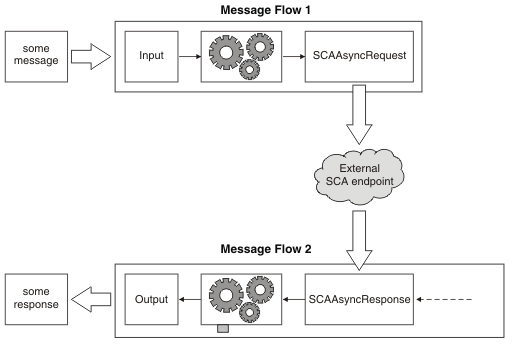Purpose
The SCAAsyncRequest node sends a request to a business process that is running on WebSphere Process Server, but the node does not wait for the associated response to be received. However, the SCAAsyncRequest node does wait for an acknowledgment before continuing with the message flow. The response to the Process Server request is received by the SCAAsyncResponse node, which can be in the same message flow or in a separate message flow. The nodes are used as a pair, and correlate responses against the original requests.

The SCAAsyncRequest node is the first half of the asynchronous request and response node pair. The SCAAsyncRequest node sends a request to a business process that is running on WebSphere Process Server. The request is sent by the SCAAsyncRequest node, but the SCAAsyncRequest node does not receive the response. The response is received by a SCAAsyncResponse node that is running on a different thread. The SCAAsyncResponse node is typically at the beginning of a different message flow; however, it must be in the same integration server as the SCAAsyncRequest node.
A Broker SCA definition is required to configure both the SCAAsyncRequest node and the SCAAsyncResponse node. The Broker SCA definition contains specific data related to the Process Server binding.
The SCAAsyncRequest node is contained in the SCA drawer of the palette, and is represented in the IBM Integration Toolkit by the following icon:

 Last updated Friday, 21 July 2017
Last updated Friday, 21 July 2017